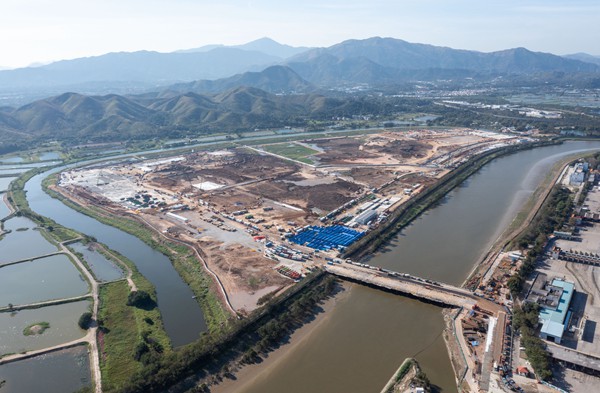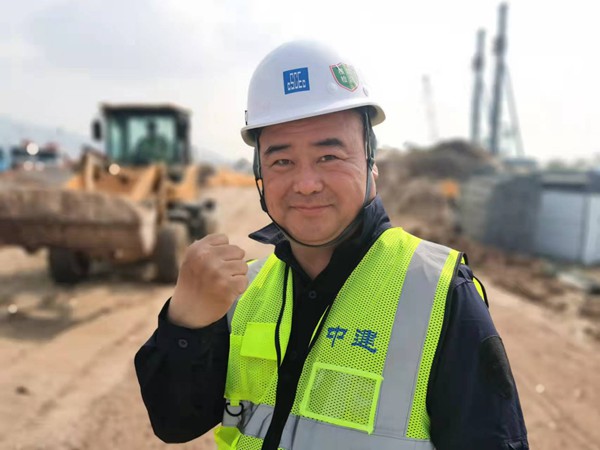Phase 1 of emergency hospital completed in Hong Kong
- By Wang Yiming
 0 Comment(s)
0 Comment(s) Print
Print E-mail China.org.cn, April 8, 2022
E-mail China.org.cn, April 8, 2022

Aided by Chinese central authorities, the first phase of a makeshift emergency hospital in Hong Kong's Lok Ma Chau Loop area was officially completed and delivered on April 7. In little more than a month, over 20,000 workers have constructed a 500-bed space and other supporting medical facilities to help Hong Kong control the surge in coronavirus cases.
With support from Beijing, several temporary community isolation and treatment facilities, or mobile cabin hospitals for COVID-19 patients, are to be built in Hong Kong. The project at Lok Ma Chau Loop is the largest and most complex, and will be built in two phases, providing a total of 1,000 beds.
The first challenge of the project was to build a temporary bridge connecting the Lok Ma Chau Loop area to Shenzhen, allowing workers and construction equipment and materials to travel easily from point to point, and thereby avoiding delays due to customs clearance.

Construction of the temporary bridge was undertaken by China State Construction Bridge Corp., Ltd., a company affiliated to China State Construction Engineering Corporation. "The task is hard and we're pressed for time," said Li Qiang, deputy general manager of the company's Guangdong branch and project manager in charge of the road pipeline network for the Lok Ma Chau Loop area project.
"We left for the project site straightaway after being given the assignment at the end of February," Li said. "At that time, there were no design plans and we had no idea of the geological or underground pipeline conditions. As such, we quickly partnered with personnel on the Hong Kong side to collect information, design and build it at the same time."

Due to the tight schedule, the special construction site and the impact of COVID-19, the workers were required to sleep in tents on site. In order to ensure the early completion and delivery, construction staff worked around the clock in three shifts, while supervisors like Li Qiang slept only three or four hours a day.
Under difficult working conditions, in just seven days from Feb. 27 to March 5, the project personnel finished building the 160-meter temporary bridge. At 18 meters wide, the bridge includes four lanes and sidewalks on both sides.

Once the bridge was completed, the first phase of the emergency hospital project in the Lok Ma Chau Loop area officially started on March 6. Li Qiang led some 30 management personnel and over 40 workers in the road and pipeline construction until the completion of the project's first phrase.

With over 20 years' experience in the construction industry, Li explained that the challenges involved in this project were unprecedented, "The makeshift hospital is urgently needed in Hong Kong. Life is of paramount importance. The mainland and Hong Kong are one big family, so we hope to do our part to help."
The first phase of the Central Government-Aided Emergency Hospital in Lok Ma Chau Loop officially started on March 6, and following safety tests, was handed over on April 7. The second phase is expected to be finished by the end of this month.

Once fully completed, the hospital will have negative-pressure wards offering 1,000 beds, including three operating theaters, 100 ICU beds and other medical facilities, in a bid to help ease the pressure on Hong Kong's health system.






Go to Forum >>0 Comment(s)